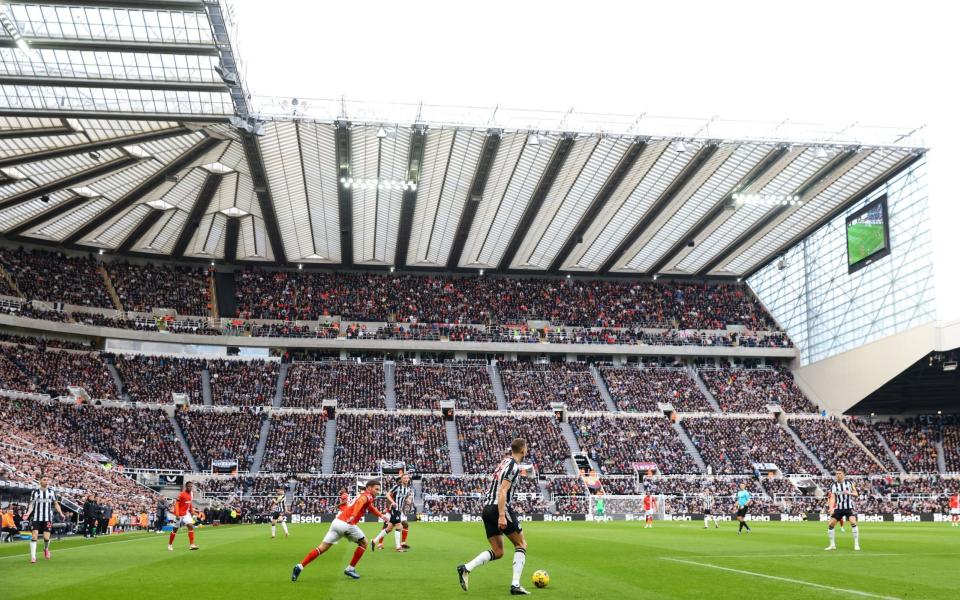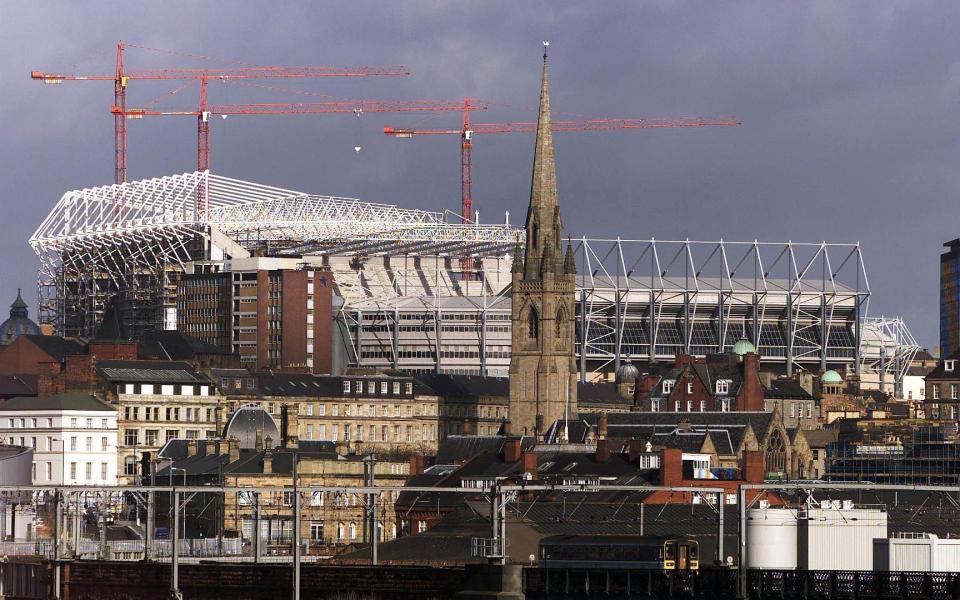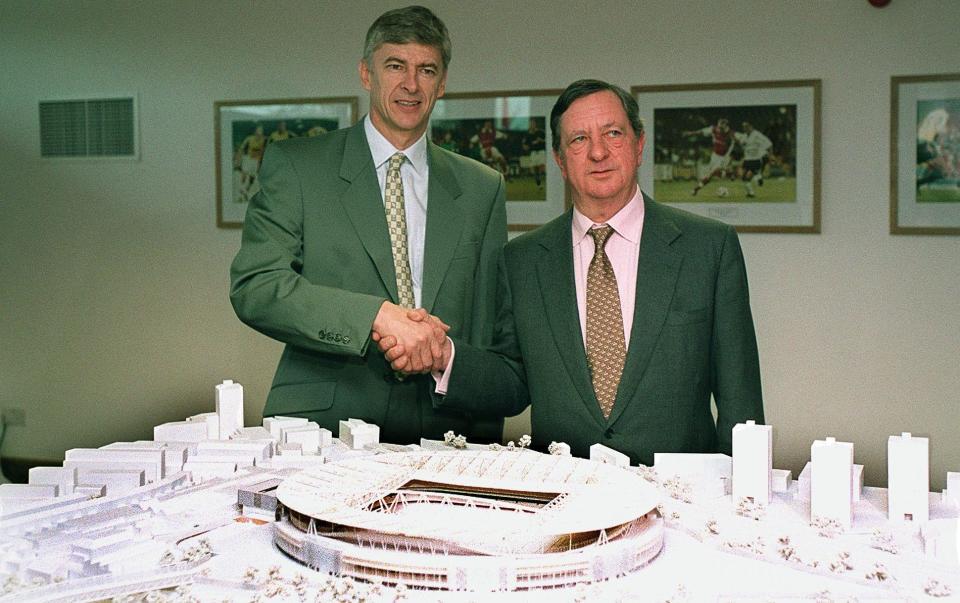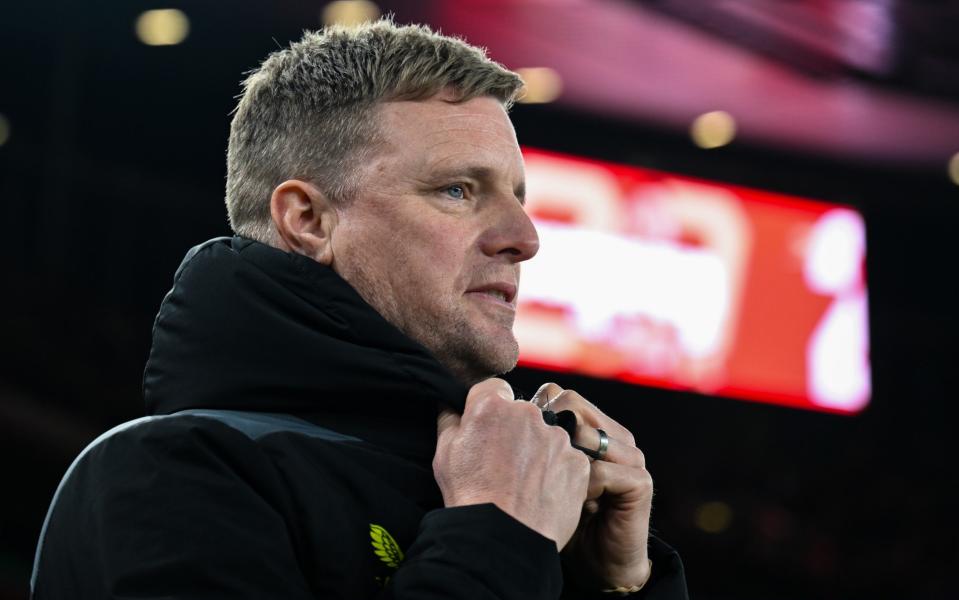Special report: Newcastle on collision course with their history over St James’ Park plans

Newcastle United want to remain at St James’ Park and expand the site as a feasibility study into the proposed redevelopment continues to consider viable options.
Senior sources who have spoken to Telegraph Sport have revealed it is the overwhelming preference of the club to remain where they are despite the complex challenges it will bring.
Newcastle’s ongoing quest to become one of the biggest and most successful clubs in Europe has set the club on a collision course with its own history, as well as the wider city.
With Grade One listed buildings behind the East Stand, and a road with a Metro tunnel and station underneath behind the Gallowgate End, the expansion of St James’ is littered with obstacles both architecturally and in terms of planning issues. Some difficult choices are going to have to be made.
For many football fans, both those from the city and those who travel to watch their team, St James’ Park is the most powerful symbol of what makes Newcastle special. It sits on a hill, dominating the city’s skyline as you approach by train or car. A one club, football infatuated city that is the heartbeat of an urban area of around one million people.
“St James’ Park is a great location at the heart of the community,” said chief executive Darren Eales. “If we can expand St James’ Park, then clearly that would make sense. But we have to know what’s possible. That is our number one approach, and that’s what our experts are doing now.
“We’ve got world leaders looking at it in terms of what is architecturally possible and what that would mean from a capacity and revenue perspective.”
The thought of leaving St James’ for a new, purpose-built stadium elsewhere is hard to stomach and it now appears that rebuilding their old home is the most likely route the club is going to take.

Newcastle are controlled by Saudi Arabia’s Public Investment Fund, which has bought a Premier League football club to extend its global reach. They have no attachment to St James’ Park, a stadium which has grown piecemeal, with new stands built in various stages between the 1970s and early 2000s. But the board seem determined to stay put.
The overwhelming preference of fans is to stay where they are, too, and to expand St James’ Park at whatever cost. Money, after all, should not be a problem for the world’s richest sovereign wealth fund, especially as infrastructure costs – like stadium renovation – fall outside of the Premier League’s profitability and sustainability rules (PSR).
Then again, neither would building an entirely new stadium on a completely different site elsewhere in the city centre.
There are two possible sites that could work. The first would be on the banks of the River Tyne, still near the main train station, on the site of the current Metro Radio Arena, which is starting to look tired and in need of replacing anyway.
The other is to move St James’ Park on to Leazes Park and completely rebuild the stadium in roughly the same location as it currently stands. There has been some talk of reviving the idea of building on the Town Moor, but this project caused uproar in the 1990s when former chairman Freddie Shepherd first proposed it.
The Moor belongs to the Freeman of the city. Cows graze on it in the summer and Europe’s largest funfair, The Hoppings, arrives every June. It is the much loved “green lung” of an old industrial city. For many, this idea is just as unpalatable as leaving St James’ Park and plain toxic to those who are not obsessed with football.
Newcastle, if they are to close the huge revenue gulf between themselves and the so called Big Six – their most recent accounts showed a turnover of £250.3m compared to Tottenham’s is £440m and Manchester City’s is £710m – need a stadium that makes them money away from football.
They desire a multipurpose venue to hold England internationals, male and female, concerts with huge global acts, as well as other ventures like NFL and Rugby League matches. This would significantly boost revenue streams, which will help ease their PSR constraints.
There were some eyebrows raised earlier this month when Manchester United talked about building the “Wembley of the North” under new partners Ineos. Newcastle’s ambition is to do something remarkably similar, in what people in the North East believe is the “True North” of England.
If the feasibility study shows they can turn St James’ Park into that venue, with a capacity between 60-70,000, this is the route Newcastle will go down. But it is full of complications.
The listed buildings behind the East Stand are part of a wider conservation area, which protects the magnificent Georgian architecture of the mixed residential and business properties, as well as nearby Leazes Park.
This is QUITE the juxtaposition of architectural styles. Leazes Terrace, Newcastle.
The houses are Grade 1 listed. St James' Park... is not pic.twitter.com/tH5LEARp09— Garry Keenor (He/Him) (@25kV) August 2, 2019
The residential buildings on Leazes Terrace are mainly owned by Newcastle University and are a mix of student and staff accommodation. They cannot simply be bought by the city’s football club and knocked down to make way for a huge new stand. The extra traffic and footfall on a matchday will cause local residents more concern, too.
However, Newcastle City Council have also made it clear that their preference is for Newcastle to remain where they are.
“The debate about the future of St James’ Park has gone on for many years,” a spokesperson told Telegraph Sport. “All the way back to the days of Sir John Hall when there was talk about it moving to the protected Leazes Park.
“The club own the Strawberry Place site, but we have not been formally approached by them about any plans for expansion. They have said publicly they are committed to St James’ Park, and without doubt its location in the heart of the city centre is one of its greatest strengths, close to hotels, public transport and easy to access.
“In planning terms, it is a challenging site – close to a conservation area and listed buildings on one side and a Metro station and tunnels on the other. That said, the city council would like to see the club remain where it is because culturally and socially it is the beating heart of the city, and we will support the club as much as we can.”
According to Populous, the architects who built Arsenal’s Emirates Stadium, increasing the capacity of St James’ Park is challenging, but definitely possible. The stadium could end up looking similar to the Aviva Stadium in Dublin, with three large stands and the East Stand remaining roughly the size that it is now. For now, though, all options are being explored.
“In my career I’ve had a few jobs where people think it’s impossible,” Populous managing director Christopher Lee told the I. “The Emirates was built on a train line, [the site] is a triangle with no access. We thought that was difficult.
“You’ve only got the Gallowgate and the East Stand to really expand at the current site and they would be pretty vertical which is not a bad thing. You would end up with some really interesting bowls and I think that’s the bit where you could start to get really nuanced and create something with genuine authenticity because it’s driven by those constraints. It’s a really interesting challenge.”

However, even if Newcastle can expand St James’ Park and modernise it, the project could take years to finish and the capacity of the stadium will be reduced – at least to some extent – while the work is done. Demand for tickets already far outstrips supply.
And where would Newcastle play if the rebuilding work required them to move out temporarily. At Sunderland’s Stadium of Light? The police would no doubt have something to say about that. Gateshead International Athletics Stadium, the home of Gateshead FC, could be a possibility, but they would need to completely rebuild that venue before they did so to accommodate enough fans to make it viable.
However, if Newcastle decided to add a tier to the Gallowgate End, and make small changes to the Leazes End corner with the East Stand, the disruption – as we have seen with Liverpool’s expansion of the Anfield Road Stand – would be minimal.
For Alex Hurst, editor of the True Faith fanzine, a move away from St James’ Park, as hard as that would be emotionally, could still become attractive to the owners.
“It’s not as simple as saying my preference is to remain at St James’ Park,” he said. “If they can expand and improve St James’ Park to accommodate the number of people who want to see the team play, of course I’d want to stay there.
“But if they have to move to get another 20-25,000 people inside the stadium then I think they should move. I don’t want a younger generation of fans not to have access to first team football, which is the case at the moment.
“We are all aware of the complications to extend. St James’ Park looks like a stadium built during four separate stages of development. It’s not just about the number of seats in the stands, it’s about the facilities too.
“When you go to a new stadium you’re not cramming into toilets, looking at huge queues at the bars, the narrow concourses. That is the case at the moment.
“Moving will be traumatic, it will not be universally accepted. Nothing in life is, there will be people who complain, but there are people who will complain if they lose their seat while the new stands are built at St James’ Park too.
“The fact is, to break up the Big Six we need a bigger stadium with better corporate facilities and it has to be a multi-purpose stadium to host other events. If we have to leave St James’ Park to deliver that, then so be it.”
There is no right or wrong. No easy answers, just a series of difficult choices ahead. When the future collides with the past, change, conflict and upheaval are inevitable.
Howe defiant over Newcastle future amid Nagelsmann links

Eddie Howe is adamant he has no fears about his Newcastle future and says he has continued to receive the full backing of the club’s owners during a difficult third season.
Newcastle have taken 11 points from their last 12 league games and are in danger of falling away from the European qualification race, which has helped fuel talk in the German media that Julian Nagelsmann is being lined up as a potential replacement.
Telegraph Sport understands those reports are false but there are other big-name managers, such as the out-of-work Jose Mourinho, who would love to take Howe’s job from him.
“Genuinely it doesn’t affect me,” said Howe, when asked about the Nagelsmann links. “I’m here, sat in the seat. My future will be defined by what I do, nobody else.
“It’s up to me to continually prove [that this club is off limits to big name managers]. But I back myself and my abilities. I know what I bring to the job and my qualities. I have ambitions for the team and for the club – I can’t control what people write.
“My managerial career in general has never been smooth. You go back to my start point [at Bournemouth] where I was taking on a challenge that was one of the hardest I’ll ever have.
“So, my management career starting from right from the depths of League Two to where I am now, I think, has served me really well in dealing with perceived adversity, challenging times. I’ve had them all through my career. This is nothing new, it’s just on a bigger scale.”
Asked whether he has been reassured by the owners, including Saudi Arabia’s Public Investment Fund, Howe replied: “It’s difficult for me to speak for them, but I have felt a support and an understanding for the season that we have had and things that have been thrown at us and things that have happened.
“That’s really important from my side that I do feel that support.”

